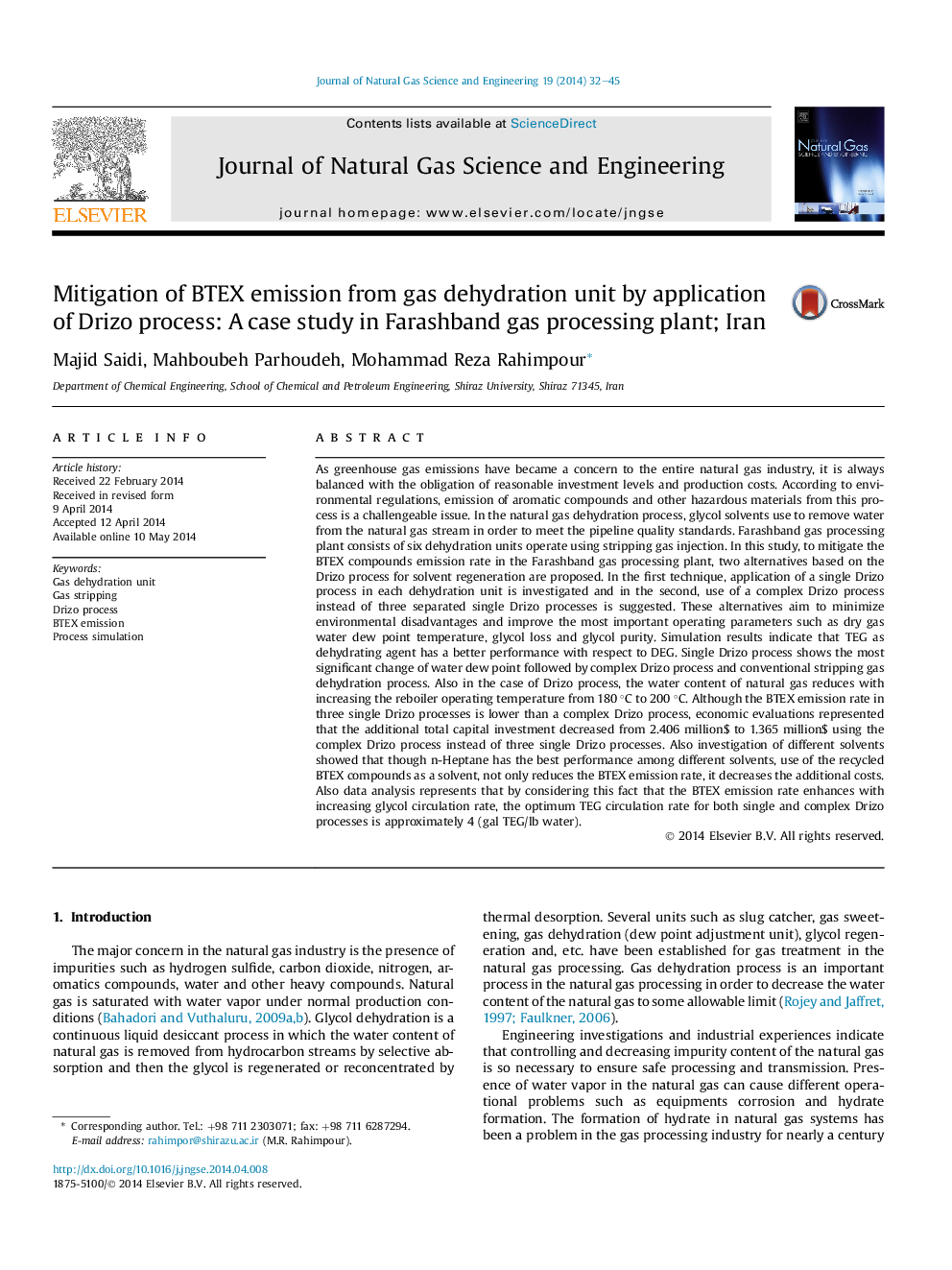| Article ID | Journal | Published Year | Pages | File Type |
|---|---|---|---|---|
| 1757970 | Journal of Natural Gas Science and Engineering | 2014 | 14 Pages |
•The dehydration unit of a domestic gas processing plant is simulated.•The effect of some operating parameters on the process performance is investigated.•Drizo process is proposed to mitigate BTEX emissions in the gas dehydration process.•Environmental considerations and economic evaluations are carried out.
As greenhouse gas emissions have became a concern to the entire natural gas industry, it is always balanced with the obligation of reasonable investment levels and production costs. According to environmental regulations, emission of aromatic compounds and other hazardous materials from this process is a challengeable issue. In the natural gas dehydration process, glycol solvents use to remove water from the natural gas stream in order to meet the pipeline quality standards. Farashband gas processing plant consists of six dehydration units operate using stripping gas injection. In this study, to mitigate the BTEX compounds emission rate in the Farashband gas processing plant, two alternatives based on the Drizo process for solvent regeneration are proposed. In the first technique, application of a single Drizo process in each dehydration unit is investigated and in the second, use of a complex Drizo process instead of three separated single Drizo processes is suggested. These alternatives aim to minimize environmental disadvantages and improve the most important operating parameters such as dry gas water dew point temperature, glycol loss and glycol purity. Simulation results indicate that TEG as dehydrating agent has a better performance with respect to DEG. Single Drizo process shows the most significant change of water dew point followed by complex Drizo process and conventional stripping gas dehydration process. Also in the case of Drizo process, the water content of natural gas reduces with increasing the reboiler operating temperature from 180 °C to 200 °C. Although the BTEX emission rate in three single Drizo processes is lower than a complex Drizo process, economic evaluations represented that the additional total capital investment decreased from 2.406 million$ to 1.365 million$ using the complex Drizo process instead of three single Drizo processes. Also investigation of different solvents showed that though n-Heptane has the best performance among different solvents, use of the recycled BTEX compounds as a solvent, not only reduces the BTEX emission rate, it decreases the additional costs. Also data analysis represents that by considering this fact that the BTEX emission rate enhances with increasing glycol circulation rate, the optimum TEG circulation rate for both single and complex Drizo processes is approximately 4 (gal TEG/lb water).
